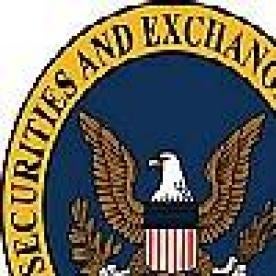In January, the SEC settled no fewer than seven enforcement proceedings with companies that involved alleged violations of generally accepted accounting principles (GAAP). While the sheer number of settlements would have been remarkable on its own, when examined individually, these proceedings reveal both emerging enforcement initiatives and recent historical trends in accounting-based actions. This article spotlights three particularly noteworthy observations from the first month of 2017.
-
The Emergence of Non-GAAP Financial Measures
In 2016, the SEC placed growing emphasis on perceived abuses of non-GAAP financial measures under Regulation G and Item 10(e) of Regulation S-K. This included the Division of Corporation Finance’s (CorpFin) Compliance & Disclosure Interpretations in May and former Chair Mary Jo White’s speech before the International Corporate Governance Network in June. On January 18, 2007, the SEC settled its first enforcement action predicated on this alleged activity. Exchange Act Rel. No. 79823.
The SEC claimed specifically that MDC Partners, Inc., a publicly traded marketing firm, violated Item 10(e)(1)(i)(A) of Regulation S-K, which requires issuers disclosing non-GAAP financial measures to present “with equal or greater prominence” the most directly comparable GAAP-based financial measure or measures. According to the Order, MDC Partners’ quarterly earnings releases for 2013 and 2014 improperly emphasized EBITDA, EBITDA margin, and free cash flow—all non-GAAP benchmarks—without satisfying this prominence requirement. Moreover, the SEC alleged that CorpFin had raised this particular concern with the company in 2012, but, despite representations to the contrary, the violation remained uncorrected.
The SEC contended that MDC Partners also ran afoul of Item 10(e)(1)(i)(B) of Regulation S-K, which requires issuers to reconcile “by schedule or other clearly understandable method” the differences between the disclosed non-GAAP financial measures and the most directly comparable GAAP-based financial measure or measures. MDC Partners purportedly violated this provision in 2012 and 2013 when it disclosed a non-GAAP metric known as “organic revenue growth.” The SEC alleged that the company omitted reference to one of the metric’s three reconciling items, and, had it been calculated consistent with the only two reconciling items that were disclosed, the metric would have been lower. Further, the company purportedly failed to include tabular reconciliations to GAAP revenue in its periodic reports and earning releases.
The SEC found that MDC Partners’ non-GAAP disclosures violated Section 17(a)(2) of the Securities Act, Section 13(a), 13(b)(2)(A), and 13(b)(2)(B) of the Exchange Act (and Rules 12b-20, 13a-1, 13a-11, and 13a-13 thereunder), and Rule 100(a)(2) of Regulation G. The company paid a $1.5 million civil penalty to settle these and other alleged violations.
-
A Non-Reliance on Financial Statement Materiality
As in MDC Partners, there were two additional settlements last month that symbolized the SEC’s willingness to bring enforcement actions absent any quantitatively material misstatements in a company’s financial statements. A January 18, 2017 settlement with General Motors Company (GM) involved the automaker’s 2014 recall of more than 600,000 vehicles with defective ignition switches. Exchange Act Rel. No. 79825. The SEC alleged that GM engineers understood in 2012 that the ignition switches created a safety concern, but delayed more than a year in notifying those persons at the company responsible for assessing whether this concern gave rise to a loss contingency pursuant to Accounting Standards Codification (ASC) 450. ASC 450 requires issuers to evaluate whether a loss is “probable” or “reasonably possible” and, if so, sets forth when an estimated loss must be recorded or otherwise disclosed.
Interestingly, while the Order stated that GM recorded approximately $41 million for potential recall costs shortly after the internal notice was provided, it sidestepped the issue of whether GM had a probable or reasonably possible loss contingency at any time during the alleged period of delay. It also made no determination on the material accuracy of any financial statement or disclosure that may have been impacted. Instead, the SEC charged GM with possessing insufficient internal accounting controls in violation of Section 13(b)(2)(B) that stemmed from the delay in evaluating whether a loss contingency existed. GM agreed to pay a $1 million civil penalty to resolve the matter.
The SEC’s January 19, 2017 settlement with HomeStreet, Inc. provides another example. Exchange Act Rel. No. 79844. The SEC contended that the diversified-services company entered into interest rate swaps to hedge its exposure to changes in fair market value on approximately 20 fixed-rate commercial loans. The Company sought to apply hedge accounting pursuant to ASC 815, which allows qualifying issuers to record the fair value of both the hedged and hedging items, thereby alleviating potential income statement volatility from market fluctuations. The SEC contended that, between 2011 and 2014, certain HomeStreet commercial loans and interest-rate swaps periodically failed to meet the effectiveness ratio designed to test whether the necessary hedge correlation actually existed.
The order claimed that the company’s balance sheets and income statements were misstated during this period, because hedge accounting was applied to certain loans when the hedge associated with those loans failed to qualify. Notably, the order did not allege any of these misstatements were material; to the contrary, it acknowledged that the company and its outside auditors had concluded that the accounting errors were not material in any reporting period and no restatements were necessary. The SEC charged HomeStreet with books and records and internal control violations under Sections 13(b)(2)(A) and 13(b)(2)(B) for these GAAP-based deficiencies and imposed a $500,000 civil penalty for these and other violations.
-
An Absence of Fraud Allegations
The SEC has pursued fraud-based claims in accounting matters with less regularity in recent years and, in turn, has increased its reliance on the less-imposing strict-liability provisions under Section 13 and negligence-based antifraud provisions under Section 17. January was no exception. None of the accounting settlements during the month included alleged fraudulent conduct, even though, in several instances, the tenor of the settlement language arguably signaled a more culpable state of mind than the violations required. In HomeStreet, the SEC also settled claims against the company’s chief investment officer, Darrell van Amen, who allegedly instructed a subordinate to make “unsupported adjustments” to the effectiveness ratio “for the purpose of making the testing results ‘effective.’” The Order also stated that the company made these adjustments to achieve effectiveness 64 times during the relevant period. The SEC charged van Amen under Sections 13(b)(2)(A) and 13(b)(2)(B). He agreed to pay a $20,000 civil penalty.
The HomeStreet settlement was not alone in this regard. The SEC instituted proceedings against L3 Technologies, Inc., an aerospace contractor, and Orthofix International, a medical device company, on January 11 and January 18, respectively. Exchange Act Rel. Nos. 79772, 79815. Both of these enforcement actions centered on allegations of improper revenue recognition in violation of ASC 605 and the recording of sales revenues before collectability was reasonably assured. In L3 Technologies, the order attributed this prohibitive conduct to “pressure from certain supervisors” to satisfy an annual operating plan, while the Orthofix order cited “a culture of aggressively setting internal sales targets and imposing pressure upon its sales personnel to meet those targets.” Both orders recounted material overstatements in revenue and attributed subsequent restatements to these improper deviations from GAAP.
Until recent years, these types of allegations routinely served as a blueprint for fraud-based claims. Then, the ensuing legal battle concentrated frequently on whether the SEC could establish the requisite state of mind. Now, under the current enforcement landscape, the absence of non-fraud claims renders the basic defense argument ineffective and, accordingly, often incentivizes cooperation and settlement. These two revenue recognition settlements in January are reflective of this trend. The SEC imposed a $1.6 million penalty on L3 Technologies for alleged Section 13(b)(2)(A) and 13(b)(2)(B) violations. Orthofix paid $8.25 million for its purported violations under Sections 17(a)(2) and 17(a)(3); Sections 13(a), 13(b)(2)(A), and 13(b)(2)(B); and Rules 12b-20, 13a-1, 13a-11, and 13a-13 thereunder. In each instance, the SEC recognized the company’s cooperation with its investigation.
Conclusion
January 2017 offered several prime examples of the current state of SEC enforcement in accounting-based actions. Of course, it also ushered in a new presidential administration and the prospect of substantial changes in policy and focus as SEC leadership readies to change. The coming months will offer an initial indication whether these emerging initiatives and recent trends continue to remain at the forefront of the SEC’s enforcement approach.




 i
i

